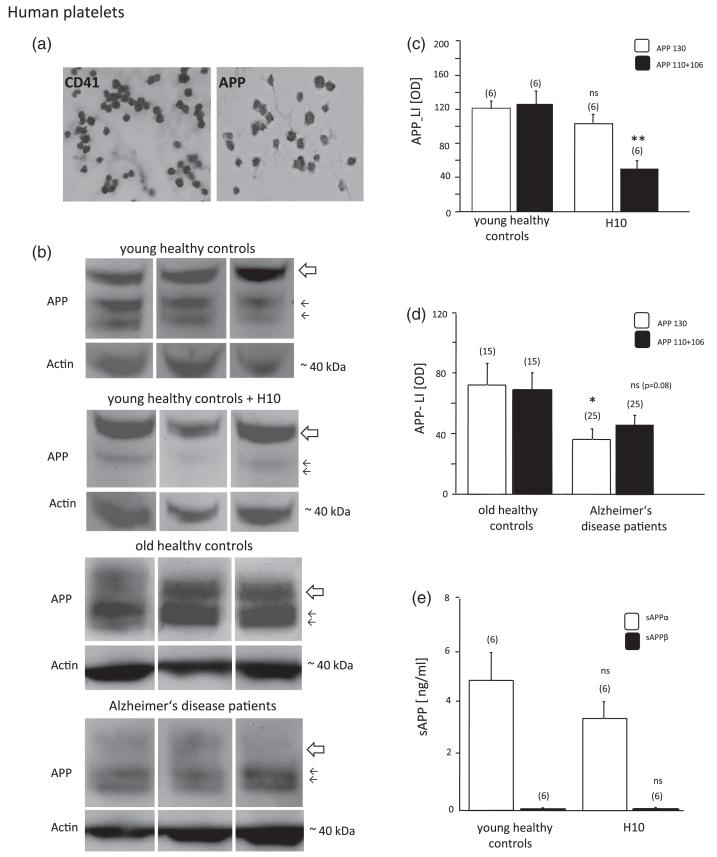Figure 3.
Immunohistochemical staining of human platelets for CD41 and APP was performed (a). Western blot analysis of amyloid precursor protein (APP) in human platelets extracts revealed three fragments of APP at 130 (large arrow) and 110, 106 (small arrows) kilo Dalton (kDa) in young healthy controls (age = 33 ± 4 years; b) and old healthy controls (70 ± 2 years; b). Actin (40 kDa) was used for quantitative correlation. Each lane represents an individual subject. In platelets of Alzheimer disease (AD) patients the larger 130 kDa APP fragment was significantly decreased (b), while the smaller 110 and 106 fragments were only slightly reduced (p = 0.08), as shown by quantitative analysis (d). Treatment of platelets of young volunteers with 10mM H2O2 (H10) significantly reduced the smaller 110 and 106 kDa APP fragments (b, c), but did not affect the large 130 kDa form. Soluble APPα (sAPPα) levels were higher than soluble APPβ (sAPPβ) levels, however not changed after H2O2 treatment (e). Values are given as mean ± SEM optical density (OD; c, d) or ng/ml (e). Statistical analysis was performed by students t-test. Values in parenthesis give the number of subjects, *p < 0.05; ns, not significant.

